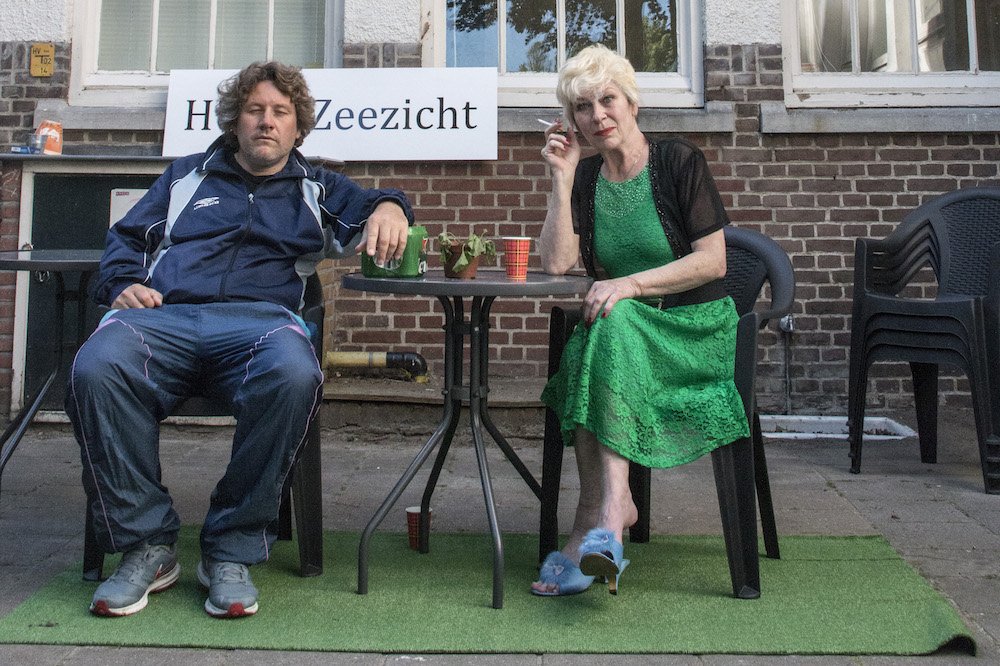
|

|
 |
|

Don Quichote (1605)
David Geysen: 'I am fascinated by characters whose dreams are dragging them away into a grand and spectacular life.'
Don Quichote is a poetic story about a man who believes that he is a knight. It is the story about his fight against reality and illusion. Is he crazy or a genius? David Geysen wants to make a vivid spectacle with a high level of musicality. 'It is about a man who wants to be like a child again. He is naïve and never stops believing in his dreams, although this behaviour is not accepted by society.' For David Geysen this antagonism is a guideline in his stage directions. Two years ago, together with actor Marcel Ott, he made a successful production called Kraamtranen and in 2001 he was awarded 'best director' at the theatre festival of Ostend. A theatre festival for new directors and young actors.
Miguel de Cervantes y Saavedra (1547-1616) is born in Alcalá de Henares. In 1571 he takes part in a combat against the Turks in the battle at Lepanto. He becomes wounded and loses the use of his left arm. Since then they gave him a nickname: 'El Manco de Lepanto'. On the way back Cervantes is captured and imprisoned for five years in Algiers. He is eventually redeemed and returns to Spain.
As from 1597 he writes the first part of his masterwork El Ingenioso Caballero Don Quijote de la Mancha (1605), according to many the first novel in history. The second part appears in 1615.
Through reading too many knight novels Don Quichote loses his mind. Thinking that he himself is a knight, he leaves home and starts out on a journey in search of adventures. He wants to fight all types of injustice.
During his travels Don Quichote is accompanied by his neighbour and servant Sancho Panza. Although Sancho knows that his master is a bit of a fool, he follows him because he thinks he will receive a generous reward as promised. Don Quichote only believes in what he thinks he sees and he doesn't see what in reality there is to be seen. Windmills are giants, a prostitute is a princess, a herd of sheep becomes an army of soldiers... These delusions contradict the common sense and prudence of Sancho. This collision between the fictitious world of Don Quichote and the real world of Sancho is the major topic of the story.
Initially meant as a parody of the knight novel, Cervantes gradually leaves this form behind. Especially in the second part Don Quichote's madness is more and more alternated by moments of clarity in which the knight demonstrates a lot of common sense. The topic of the wise madman we also find in Lof der zotheid (1511) from Erasmus.
For his version Geysen chose the Sancho from the second part. Geysen: 'The tension between Sancho and Quichote is a lot more interesting and comes closer to what I want. Fantasy is something you cannot share. My imagination will never become the imagination of someone else. This is exactly what happens with Don Quichote and Sancho. The moment Sancho goes along in the imagination of his master, Quichote takes over and cuts him off.'
Another facet in Don Quichote which Geysen wants to accentuate is love. Geysen: 'Dulcinea stands for the dream woman, love as a means in the struggle against loneliness.'
Geysen has chosen to write into the play a modern part that runs parallel to the story of Don Quichote. It is a story about a couple who are splitting up. The man in this relationship brings back to mind the image of Don Quichote. With Don Quichote he takes on a flight into his imagination. Of course a confrontation between reality and illusion is at hand.
How this confrontation works out you can see from 25 March onward in Studio I in the Appeltheater. (a.p.)